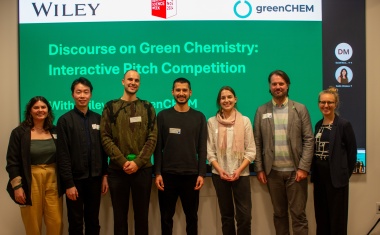Expert Statement: Christophe Girard, Siegfried
Executives and industry experts share their views on drivers as well as barriers for the use of flow chemistry in pharmaceutical manufacturing and the prospect for this technology in their industry sector.

Continuous Manufacturing (CM) — also called Flow Chemistry or Micro Reaction Technology (MRT) — is a technique that has been gaining global importance over the past decade as a result of improved process control and reduced operating costs, leading to increased manufacturing profits and a competitive edge. Recent years have shown that the reason for a company to change from “batch” to “flow” have been varied, often depending on the sector, process type of interest and scale of operation. Supply chain security and improvements in process sustainability are strong emerging drivers for the adoption of CM.
With the product key, the infrastructure needed varies greatly and depends on the available chemistry, cost of goods, volumes required and the hazard profile of a transformation. The modularity and flexibility of continuous flow set-ups enables the development of small, agile production plants that can be used for the manufacture of multiple products — with easy re-configuration allowing for rapid product changeover.
Following on from this, the ease of replicating these small footprint systems represents an opportunity for manufacturers to develop a process and subsequently deliver production units across multiple countries to serve the local product demands. This is in stark contrast to the current approach of a single large-scale plant, with warehousing used to manage supply chain disruptions.
With all of these benefits, a logical question follows: Why the slow adoption of MRT?
CHEManager asked executives and industry experts to share their views on drivers as well as barriers for the use of flow chemistry and the prospect for this technology in their industry sector. We proposed to discuss the following aspects:
- In your opinion, what are the strongest drivers (success factors) of the implementation of flow chemistry processes?
- Which barriers are slowing down or impede the implementation of flow chemistry processes?
- What does it need for flow chemistry to be implemented more widely?
lmplementing flow chemistry has many advantages compared with batch chemistry. Firstly, safety is improved because there is less danger from exothermic reactions or toxic substances. The yield and purity can be increased because of more precise control over reaction variables such mass and heat transfer.
Additionally, sustainability is improved, attributable to lower solvent consumption and energy use. Capital expenditures are also reduced because compact modular process skids enable one to perform a large number of flow processes within a small area.
“lmplementing flow chemistry has several advantages
compared with batch chemistry”
The main challenge of flow chemistry is [performing] highly heterogeneous reactions that can clog the reaction system. Furthermore, the relatively small number of batches and the challenges of batch traceability have hindered acceptance in pharma manufacturing - yet these regulatory issues are being resolved.
Although it is often easier to produce the first kilograms in batch mode, multidisciplinary teams can readily take advantage of the benefits of flow chemistry. Therefore, flow chemistry has no real showstoppers.
At Siegfried, we will use flow chemistry for reactions that are difficult to control or too hazardous to perform with standard batch equipment. We will combine flow chemistry with continuous downstream processing such as extraction and distillation to drive maximum process stability, product quality, and yield.




